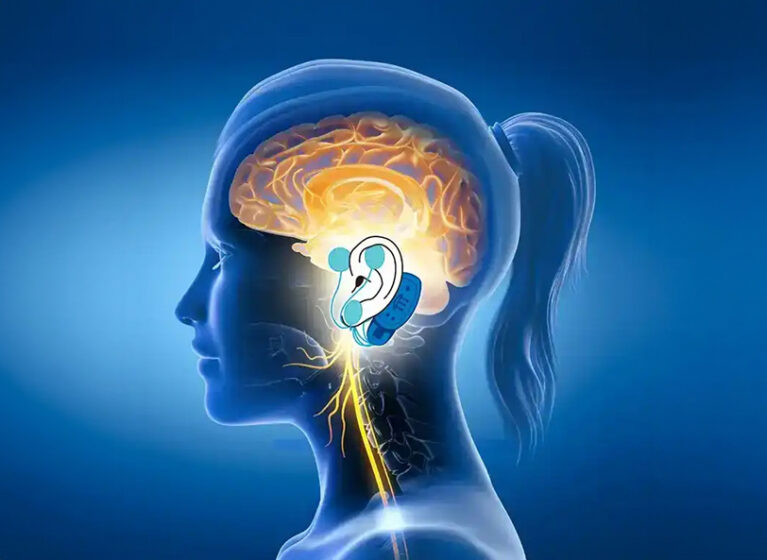
A new device, IB-Stim, offers a medication-free way to help pediatric patients with irritable bowel syndrome (IBS). IBS is a type of a disorder of the gut-brain interaction (DGBI) which is the most common cause of chronic abdominal pain in children. Nearly 20% of patients seen by UVA Health Children’s Pediatric Gastroenterology department are being treated for chronic abdominal pain.
DGBIs can have many effects on children, including:
- Impairments in daily life
- Missing school, extracurriculars, and social opportunities
- Physical deconditioning
- Emotional distress
- Worsening symptoms of anxiety and depression
- Disordered eating
When medications and other traditional treatments don’t work, patients are left to continue navigating these symptoms without knowing when, or if, they’ll ever find relief. IB-Stim offers a solution for many of these patients.
When Pain Is the Problem
DBGIs are a group of conditions that affect the GI tract leading to symptoms like abdominal pain, nausea and changes in bowel habits. One of the causes of DBGIs is increased sensitivity of the GI tract and changes in how the brain interacts with the signals from the gut. Because of the severity of symptoms and the significant disability it can cause, some patients feel something scary and dangerous is happening.
DGBIs can be very frustrating for patients as there is not one test that guarantees the diagnosis and there is not one treatment pathway that works for everyone. Physicians can diagnose DBGIs after other tests ensure it is not a problem with inflammation, allergy, infection, or abnormal GI tract anatomy.
There are a lot of treatments, but the benefits of the therapy are often from trial and error. Although doctors know a lot about DGBIs, there is a lot about DBGIs that is still a mystery.
Jessica Murray, CPNP, Jeremy Middleton, MD, and Nicole Plowman, PNP, have helped many children suffering from chronic abdominal pain. “Patients with DBGIs are some of the most difficult to treat because each patient’s situation is unique. Sometimes we need to try many different therapies to help with symptoms. This journey can take time, lead to frustration, and negatively impact mental health," Murray explains.
What Makes IB-Stim Different?
With DGBIs, allowing pain to persist makes the problem worse. Pain signals from the gut to the brain result in gut hypersensitivity. Which leads to more pain. This cycle compounds both the pain and the mental effects of the condition.
Interrupting the pain cycle often results in long-term relief.
Most of the IB-Stim team’s patients have tried multiple methods to relieve pain. Some medications effectively treated the pain but had objectionable side effects. In some cases, IBS wasn’t a patient’s primary medical concern and medications interfered with other prescriptions they needed.
For these patients, IB-Stim offers especially appealing benefits.
IB-Stim is a device worn behind the ear that emits a pulse. This pulse interrupts pain signals. Much like a very targeted TENS machine. But what’s most remarkable for many is the timeframe.
IB-Stim is only worn for 4 weeks. After that, it can be worn another 4 weeks if symptoms persist. For patients who have been struggling with symptoms for months, this is a huge relief.
The Patient Experience
IB-Stim doesn’t work for everyone. But for the patients it does help, they often see improvements that expand to all areas of their life.
“We’ve had patients report improved sleep and energy. We had a patient with recurrent fainting attacks who no longer experiences this. It can also be very helpful for chronic nausea, which can be even more disabling than pain,” the team shares, highlighting the substantial benefits to quality of life.
The relief is so great that most patients are more than willing to make the commitment that IB-Stim requires. “Some families drive 2 or more hours each way weekly for placement of the device,” Murray shares. The team is pleased that patients have been so enthused with the results they've seen. As an early adopter of this technology, UVA Health Children’s is one of the few places in the United States where the device can be placed.
Adopting New Technology
Being an early adopter of medical technology isn’t always easy. Middleton first learned about IB-Stim at a gastroenterology conference. The data showed low risk and the potential for pain relief in a patient population that needed it.
“Unfortunately, many insurance companies still consider this ‘experimental’ despite several well-designed studies. ,” Murray says. The team has worked tirelessly with leaders to create a process that maximizes their ability to seek insurance approval for the device
But given the 87 counties throughout Virginia and West Virginia that UVA Health Children’s cares for and the prominence of DGBIs, the team agrees it’s important to pursue every opportunity to help children feel better. And their patients agree.